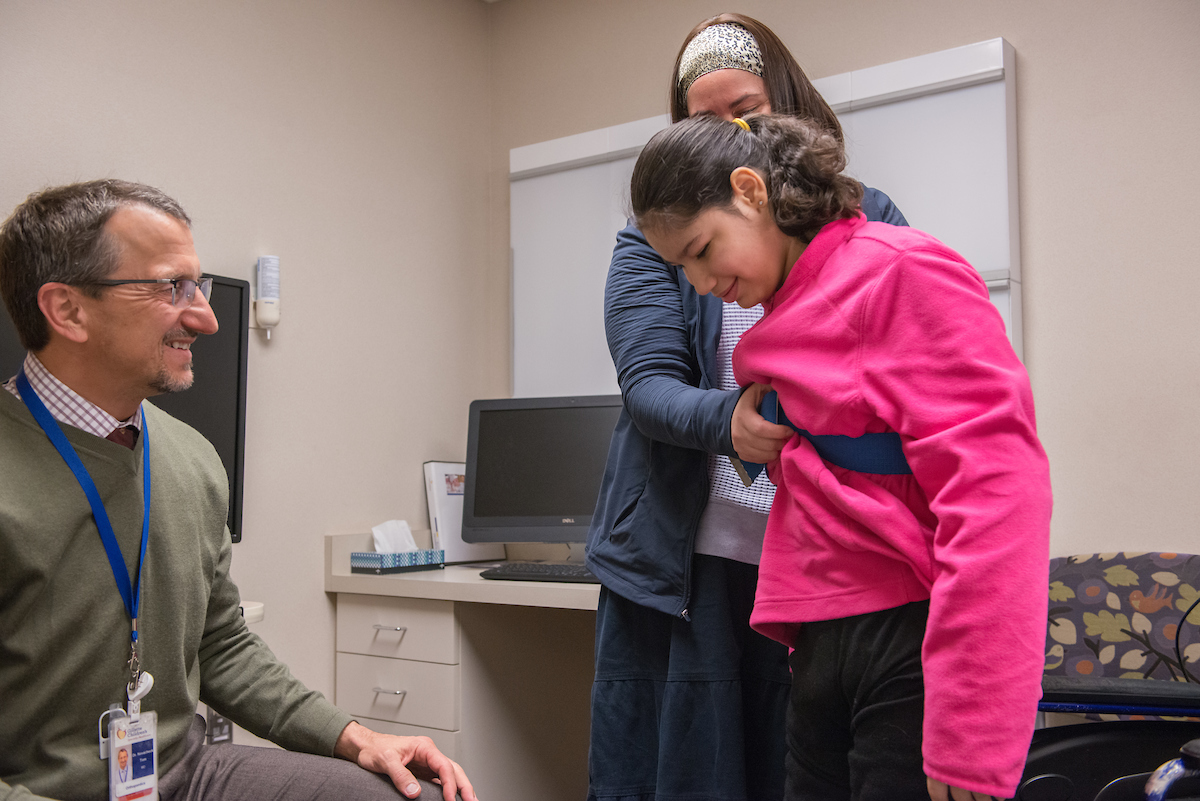What is an intrathecal baclofen pump (ITBP)?
An intrathecal baclofen (ITB) pump is a device that’s surgically implanted to deliver baclofen medication directly into spinal fluid.
ITB therapy helps reduce spasticity by allowing muscles to relax—it’s a treatment to relieve spasms, reduce abnormal movements, and improve motor function. ITB therapy might help your child by:
- Increasing comfort
- Reducing pain
- Making it easier to change positions
- Making it more comfortable to wear braces
- Making it easier to manage self-care activities, such as getting dressed and grooming
Because baclofen is administered directly into the spinal fluid (this is also known as intrathecally), your child will need a smaller dose than if they took the oral form of the medication. Using smaller doses lowers the risk of side effects, such as drowsiness.
Who benefits from ITB therapy?
Muscle spasticity is a common effect of cerebral palsy, acquired brain injuries, complex movement disorders, and spinal cord injuries. If your child has widespread spasticity, or has therapy goals to improve their daily function, they might be a good candidate for ITB therapy.
ITB therapy can reduce spasticity and might reduce dystonia (a type of movement disorder), but it doesn’t affect other problems associated with cerebral palsy. If your child has spasticity, they might still require orthopedic surgery, such as a single-event multilevel surgery (SEMLS), to correct muscle contractures or bony deformities.
At Gillette Children’s, your child’s growth, challenges, and expected outcomes will be assessed by specialists who are trained to work with kids. If your child is identified as a good candidate, we’ll work with your family to plan a convenient time to implant the ITB pump.
Gillette was one of 12 U.S. medical facilities testing the ITB pump’s safety and effectiveness when the FDA approved the device in 1996. Since then, we’ve developed one of the nation’s largest ITB pump programs, serving more than 500 patients whose widespread spasticity (tightness or stiffness) remained a problem despite nonsurgical treatments.
Intrathecal Baclofen Pump Services at Gillette Children's
Successfully identifying which patients will benefit from intrathecal baclofen (ITB) therapy, performing ITB pump implantation and providing long-term care to patients who have ITB pumps requires the collaboration of a highly skilled team.
You’ll have access to a full range of services and extensive family support at Gillette. An expert team will collaborate to provide comprehensive care for your child, and will help you navigate the services you need.
ITB pump implantation might be just one part of your child’s treatment plan, which also might include:
- Orthotics, prosthetics and seating
- Neurosurgery
- Rehabilitation medicine
- Rehabilitation therapies
- Spasticity evaluation
To help your family prepare for a hospital stay and make the most of long-term care, Gillette offers support services like:
How can we prepare for ITB Pump placement surgery?
Please see this page for information about preparing for surgery at Gillette. A member of the surgery team will reach out to you ahead of your scheduled procedure with any specific preparation instructions you need to follow.
 Home Page
Home Page

